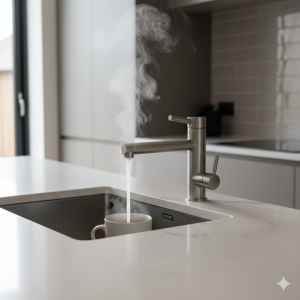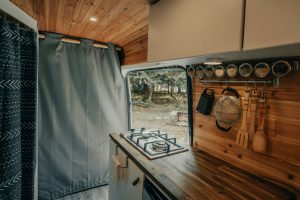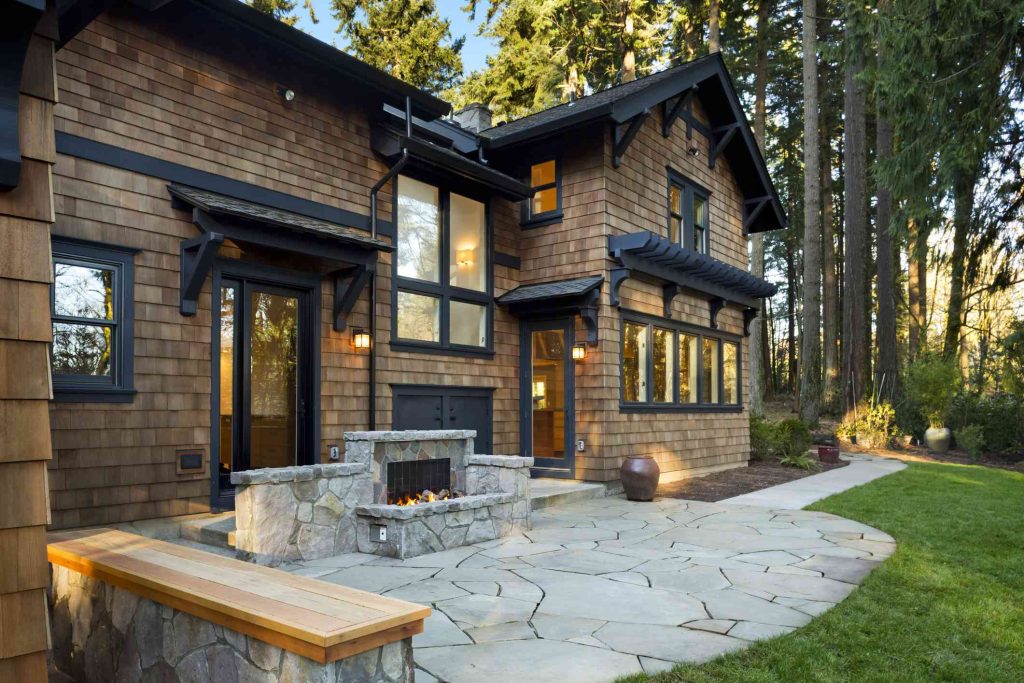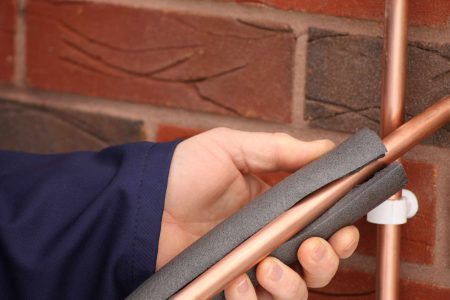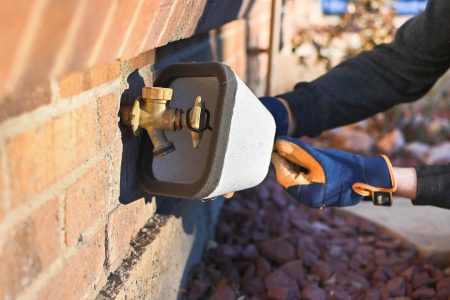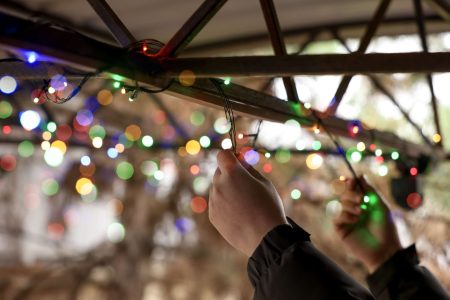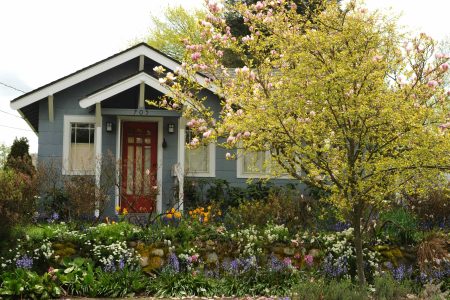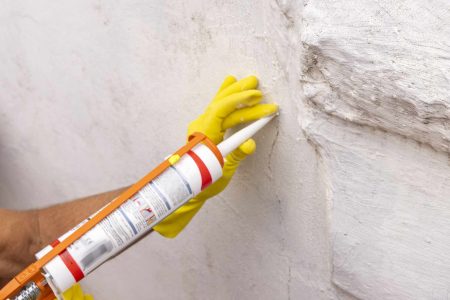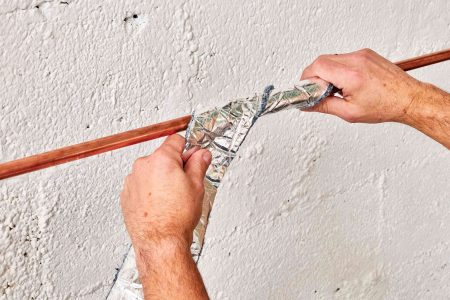Looking over house siding options doesn’t have to be overwhelming although nothing will affect the appearance of your home than your choice of exterior siding. When selecting a siding, consider your budget, the aesthetics and architectural style of your home, local weather conditions, and how long you hope the siding lasts.
Here are 13 of the most popular materials to consider for your home’s exterior siding, including the material’s average price per square foot (note that the quoted pricing typically does not include installation costs).
Important Siding Considerations
- Appearance: The siding material should match the architectural style of the house. For example, it’s wise to cover a historic home in wood, brick, or stone but not with vinyl, seamless steel, or aluminum siding.
- Water-resistance: Learn which types of siding are water-tight or prone to leaks from weather or even power washing that can cause havoc on your home.
- Energy efficiency: Some materials may be more efficient than others. For example, vinyl siding has a foam backing that adds insulation but you might not need that in milder climates.
- Maintenance and care: Some materials need higher maintenance, such as painting or caulking, while others go for years before there are any signs of wear and tear.
- Installation: Some sidings are more complicated to install. Properly installed siding is necessary to preserve your home’s structural integrity.
- Lifespan: Some siding materials last a lot longer with little maintenance than other materials.
Popular House Siding Options
-
01
of 13Stucco Siding
Traditional stucco is cement combined with water and inert materials such as sand and lime. It is a more expensive siding to install at about $5 to $6 per square foot. Many homes built after the 1950s use a variety of synthetic materials that resemble stucco. Some synthetic stuccos have been problematic because poor quality or improperly installing the material can lead to trapped moisture. However, a quality synthetic stucco will prove durable. Tint the stucco the color you want, and you may never need to paint.
Pros-
May never need repainting
-
Durable even in extreme windy conditions
-
Pest-resistant
Cons-
Porous and can absorb moisture
-
Prone to surface cracks
-
Expensive to install
-
-
02
of 13Stone Veneer Siding
If you think of ancient monuments and temples, you know that stone is the most durable of all building materials. Granite, limestone, slate, and other types of stone are beautiful and nearly impervious to the weather. Unfortunately, they are also extremely expensive. Precast solid stone veneers and facings are more affordable at about $35 to $50 a square foot to install based on the type of stone you choose. Cultured and manufactured stone come in much less at It tends to be less expensive at $5 to $8 per square foot. Some stone veneers look quite genuine, while others are clearly artificial.
Pros-
Most durable and withstands harsh elements
-
Can raise the value of your house
-
Dozens of options and styles
Cons-
Stone veneer is expensive to install and replace
-
Some veneers look artificial
-
Prone to small chips and breakage
-
-
03
of 13Cement Fiber Siding
Fiber cement siding can have the appearance of wood, stucco, or masonry and costs $5 to $13.50 per square foot, which is not the least or most expensive option. This durable, natural-looking material is often called by the brand names HardiPlank and HardiPanel. If you want the look of authentic wood with a little less maintenance, cement fiber is a good option. Fiber cement siding is fireproof, termite-proof, and may have a warranty of up to 50 years.
Warning
Some older homes have cement asbestos siding made from Portland cement and asbestos fibers. Removing that type of siding can be hazardous, so remodelers often apply a new, modern siding on top.
Pros-
Natural-looking
-
Best warranties
-
Fire-proof
-
Termite-proof
Cons-
Moisture absorbent
-
Not very energy-efficient
-
Tough to install
-
Requires painting
-
-
04
of 13Wood Clapboard Siding
Modern science has given us many synthetic wood-like products, and yet solid wood (usually cedar, pine, spruce, redwood, cypress, or Douglas fir) remains the favorite choice for finer homes, coming in at $2 to $5 a square foot. With periodic care, wood siding will outlast vinyl and other pretenders. As with cedar shingle siding, wood clapboards can be stained rather than painted. Many wood frame houses built centuries ago still look beautiful today.
Pros-
Traditional, upscale aesthetic
-
Longevity with care
-
Can be stained or painted
-
Insulating material
Cons-
Requires high maintenance
-
Color can fade
-
Prone to insect damage
-
Prone to moisture damage
Continue to 5 of 13 below -
-
05
of 13Brick and Brick Veneer Siding
Made of fired clay, brick comes in a wide variety of earthy, eye-pleasing colors and can cost between $9 and $28 per square foot for the beauty of brick siding. Although it is expensive, brick construction is desirable because it can last centuries and probably won’t need any patching or repairs for the first 25 years. Older brick homes may have stucco siding, which should be maintained because of its historical accuracy. Quality brick veneers are also attractive and durable, although they don’t have the longevity of solid brick.
Pros-
Earthy colors
-
Highly durable and long-lasting
-
Low-maintenance
Cons-
Expensive
-
Brick veneer not as long-lasting as solid brick
-
Limited colors
-
-
06
of 13Cedar Shingle Siding
Homes sided in cedar shingles (also called “shakes”) blend beautifully with wooded landscapes and will cost between $6.50 and $13.75 per square foot. Made of natural cedar, the shingles are usually stained browns, grays, or other earthen colors. Shakes offer the natural look of real wood, but usually, require less maintenance than wood clapboard. By using stain rather than paint, you can minimize peeling.
Pros-
Natural, earthy look
-
Can be painted to minimize peeling
-
Forms a unified horizontal look
Cons-
Limited colors
-
Poor-quality, cheap cedar shingles have problematic knots
-
High-maintenance
-
-
07
of 13Engineered Wood Siding
Engineered wood, also called composite or manufactured wood, is made with strands or fibers of wood fused with resin. Engineered wood siding costs between $4 to $9 a square foot. Oriented strand board (OSB), hardboard, high-density fiberboard, and veneered plywood are examples of engineered wood products. Engineered wood usually comes in panels that are easy and inexpensive to install. The panels may be molded to create the look of traditional clapboards. Because the textured grain is uniform, engineered wood does not look exactly like real wood. Still, the appearance is more natural than vinyl or aluminum.
Pros-
Easy, inexpensive installation
-
Uniform texture
-
Moisture-resistant
-
Durable
-
Treated with insecticide and fungicide
Cons-
Lightweight and prone to cracks
-
Tough to paint, adherence can be an issue
-
Not an eco-friendly product
-
Fades over time
-
Can be porous
-
-
08
of 13Seamless Steel Siding
Seamless steel siding is very strong and resists shrinking and bulging when the temperatures change and costs $16 per square foot, which is higher than regular steel siding because of the concealed fasteners. The siding is custom fit to the exact measurements of your house. You can purchase steel siding with a wood-look texture.
Pros-
Durable, shrink and bulge-resistant in extreme temperatures
-
Low-maintenance
-
Pest-resistant
-
Fits modern architectural styles
Cons-
Installation can be very tricky
-
Higher cost
-
Prone to denting
-
Susceptible to scratches
Continue to 9 of 13 below -
-
09
of 13Board-and-Batten Siding
Board and batten, or board-and-batten, is a vertical siding that often is used to give a house the perception of height. The cost ranges between $2.25 to $12.50 per square foot. The house, like the one shown here, has vertical siding and is just one of the methods that architect Cathy Schwabe uses to give this 840-square-foot cottage a big look.
Pros-
Classic look that offers a sense of visual height
-
Long lifespan
-
Low maintenance
Cons-
Lengthy, complex installation that must be done properly
-
More expensive option
-
Repairs can be tricky
-
-
10
of 13Vinyl Siding
Vinyl siding is made from PVC (polyvinyl chloride) plastic and it is inexpensive, coming in between $3 to $12 a square foot. Unlike wood or cedar, it won’t rot or flake, but it could melt. Vinyl is usually less expensive to purchase and install than most other siding materials. There are, however, drawbacks. Vinyl can crack, fade, or grow dingy over time, though the average vinyl siding lifespan is about 30 to 40 years, about the same as many other siding types. Vinyl is also controversial because of environmental concerns during the manufacturing process. Beware, also, about the architecture of your home—vinyl has been misused on beautifully articulated Victorian homes, hiding the architectural detail and handcrafting from a different era.
If you like the idea of vinyl but don’t like the look of vinyl panels, another option is to have a professional painter spray on a liquid PVC coating. Made from polymers and resins, the paint-like coating is about as thick as a credit card when it dries. Liquid PVC became widely available in the mid-1980s, and reviews are mixed. The damage caused by a poor application can be devastating. Learn about chemistry before you choose.
Pros-
Does not rot or flake
-
Less expensive
-
Easy to install
-
Colors do not fade
-
Can look like other materials
-
Cheap to repair and maintain
Cons-
Can melt, crack, fade, and look dingy with age
-
Manufacturing process not eco-friendly
-
May be affected by high winds
-
Prone to bending and cracking
-
Does not usually increase a home’s value
-
Can get moldy on the outside
-
-
11
of 13Corrugated Metal Siding
We’ve gotten used to seeing corrugated metal roofs, but why not siding especially when it has an attractive price point of $3 to $8 per square foot? It has a lower-class reputation in the United States—traditionally, corrugated steel has been used for prefabricated military facilities and factories, so it’s considered an “industrial” construction material. In Iceland, however, it’s a very popular siding that can face up to the harsh winters of a northern climate or dry southern regions.
Pros-
Withstands effects of harsh weather
-
Resists insects, rot, and mold
-
Coated to resist rust
Cons-
Considered industrial
-
Prone to dents
-
Painting metal is difficult
-
-
12
of 13Aluminum Siding
You may think of aluminum siding as an old-fashioned option, but some builders offer it as an alternative to vinyl. It’s an affordable material ranging between $3 and $7.25 per square foot. However, there is a higher-end type, called longboard aluminum siding, which mimics the look of wood and costs about $14 to $18 per square foot.
Both aluminum and vinyl materials come with insulation, are easy to maintain, and are fairly durable. Aluminum can dent and fade, but it won’t crack the way vinyl will. Also, aluminum is not usually considered harmful to your health or the environment. Although vinyl can be recycled, the manufacturing process is known to be hard on the environment. Seamless steel siding is another popular alternative. Corrugated iron has been used for siding but it is more popular today as a roofing material.
Pros-
Minimal maintenance
-
Durable
-
Can last up to 40 years
Cons-
Prone to dents
-
Will fade over time
-
May be noisy when rattled by strong winds
Continue to 13 of 13 below -
-
13
of 13Split-Log Siding
If you have a rustic-style home, full-log siding can be cost-prohibitive, but split-log siding uses half a log at half the cost. Split or half-log siding materials can cost between $3.50 and $5 per square foot. Cedar half logs are more expensive and cost $5.50 to $13 per square foot. Half logs are about 3 inches thick so they still look quite substantial. Quarter logs are even less expensive, and they can be a DIY installation. You can also achieve the look in vinyl between $3 to $6 per square foot.
Pros-
Authentic, rustic aesthetic
-
Wood is typically left natural and sealed, no need for paint
-
Eco-friendly (wood)
Cons-
Expensive
-
Multiple treatments needed for wood
-
Wood is tough and heavy to install
-
-
What is the cheapest siding for a house?
Vinyl is one of the cheaper siding materials. In addition, installation is easy and quick, which further reduces labor costs.
-
What is the newest type of siding for houses?
Fiber cement siding is one of the newest types of siding for homes. It’s durable and looks great but it’s very heavy and requires professional installation.
-
What type of house siding lasts the longest?
Brick siding can last hundreds of years on your home. For the first 25 years, it likely won’t need any care.
Read the full article here
